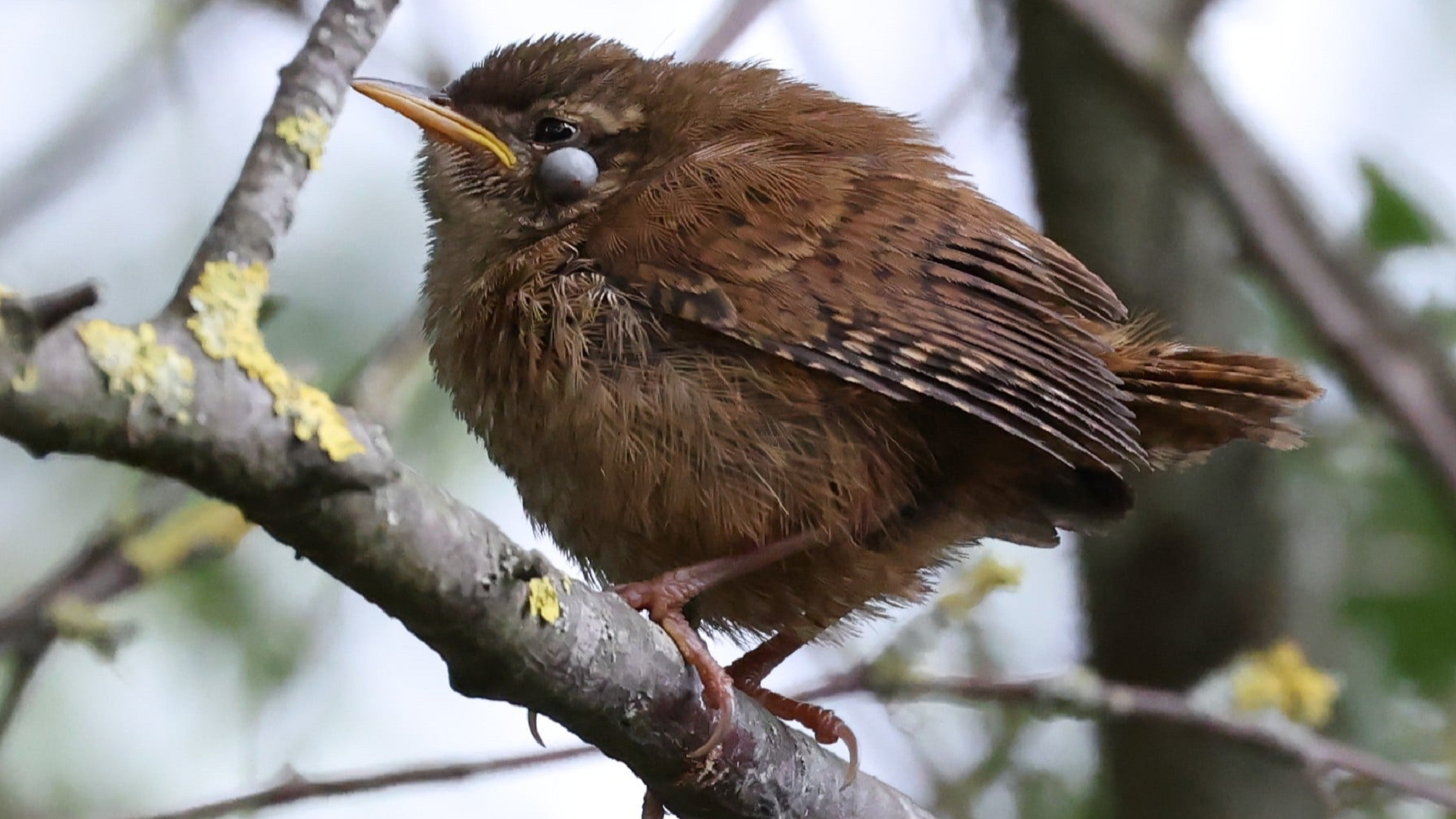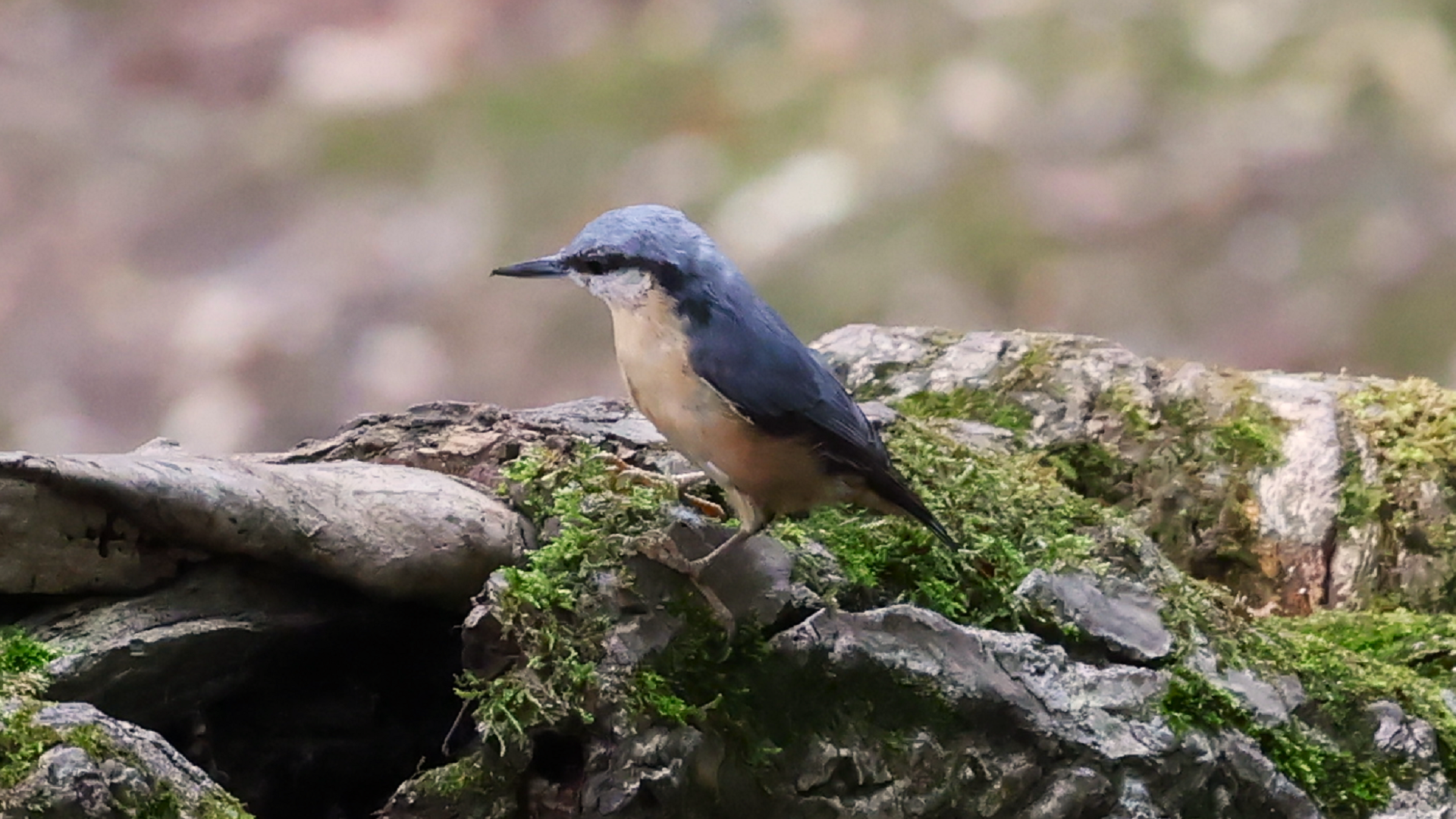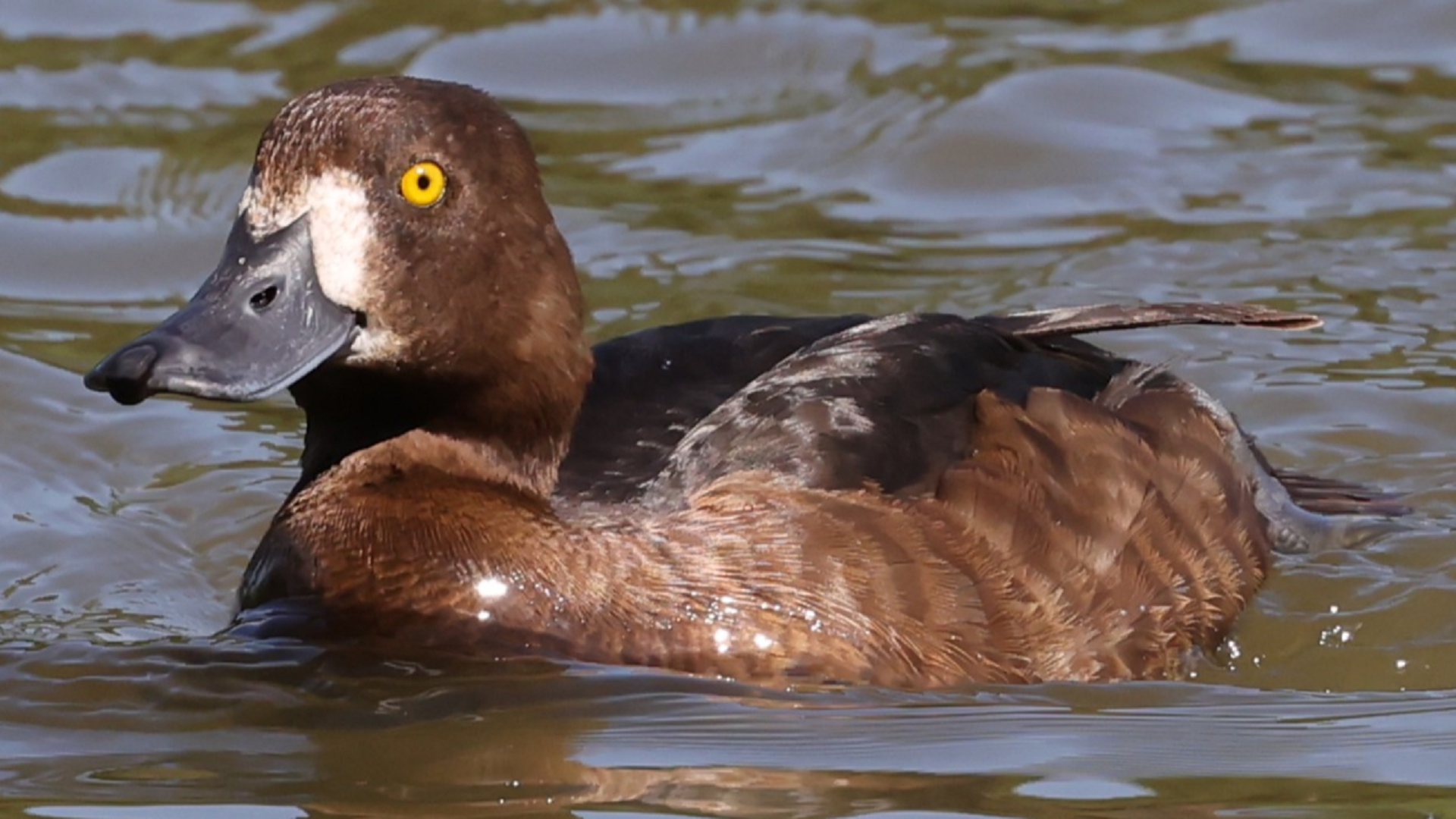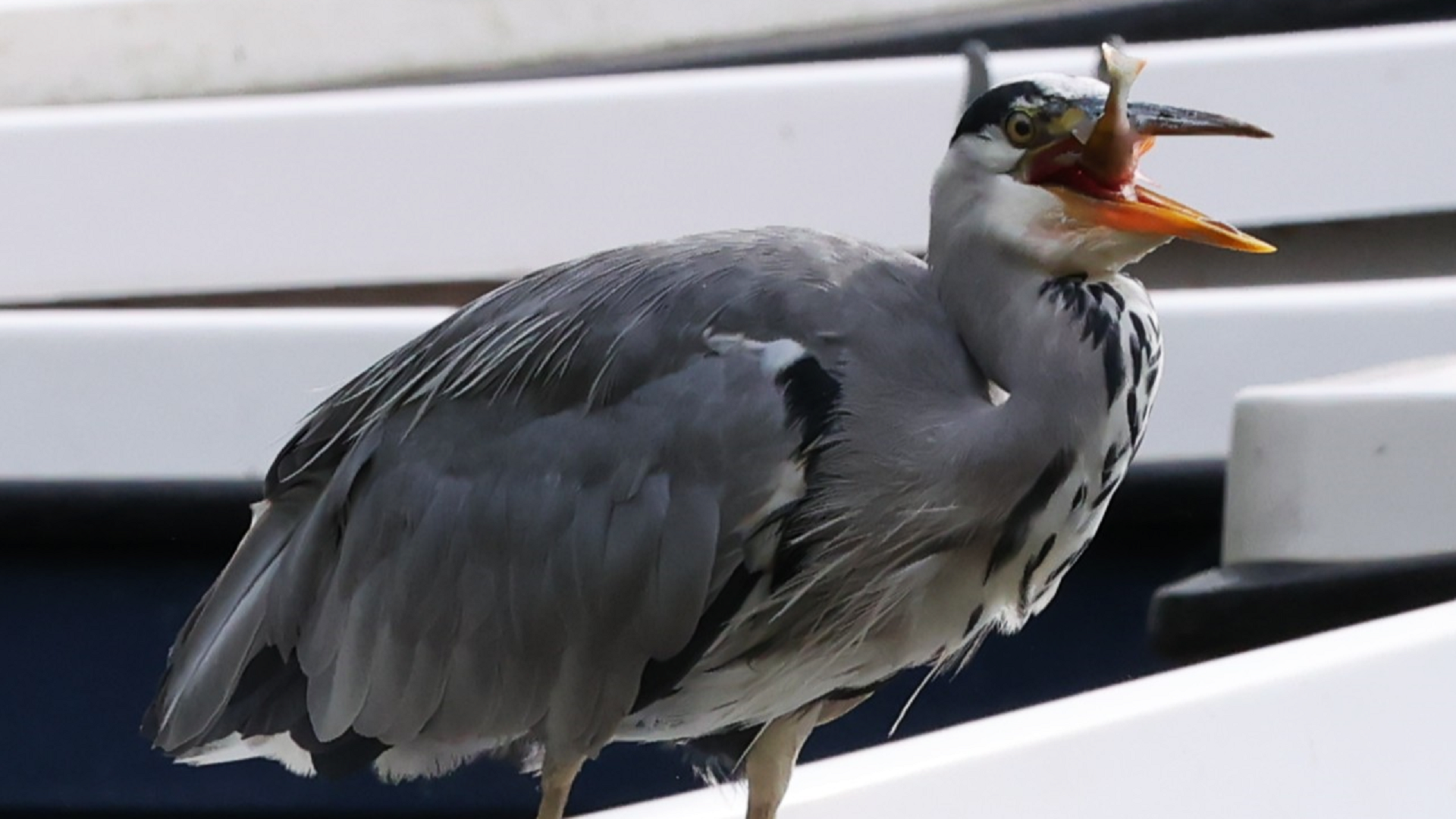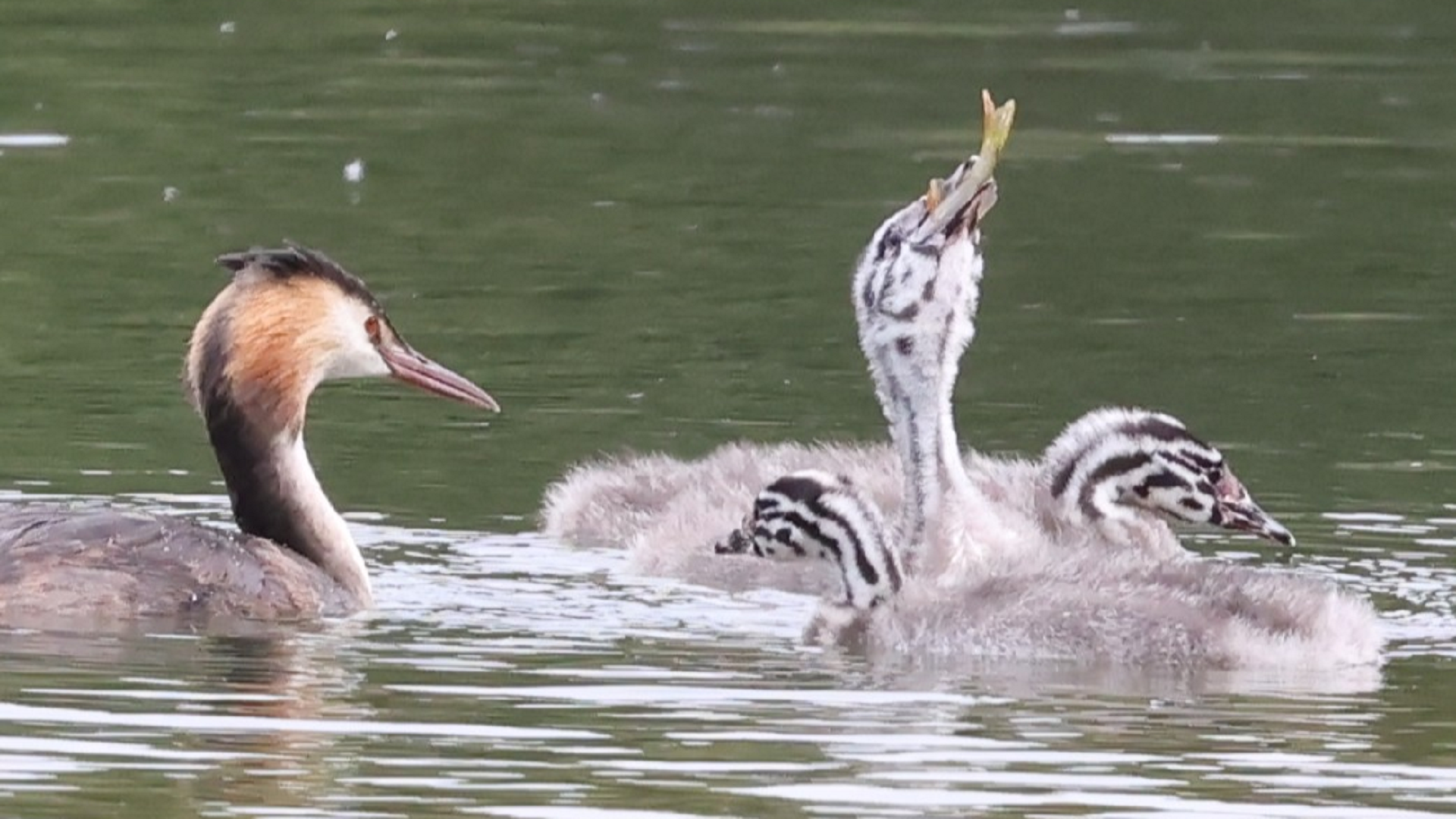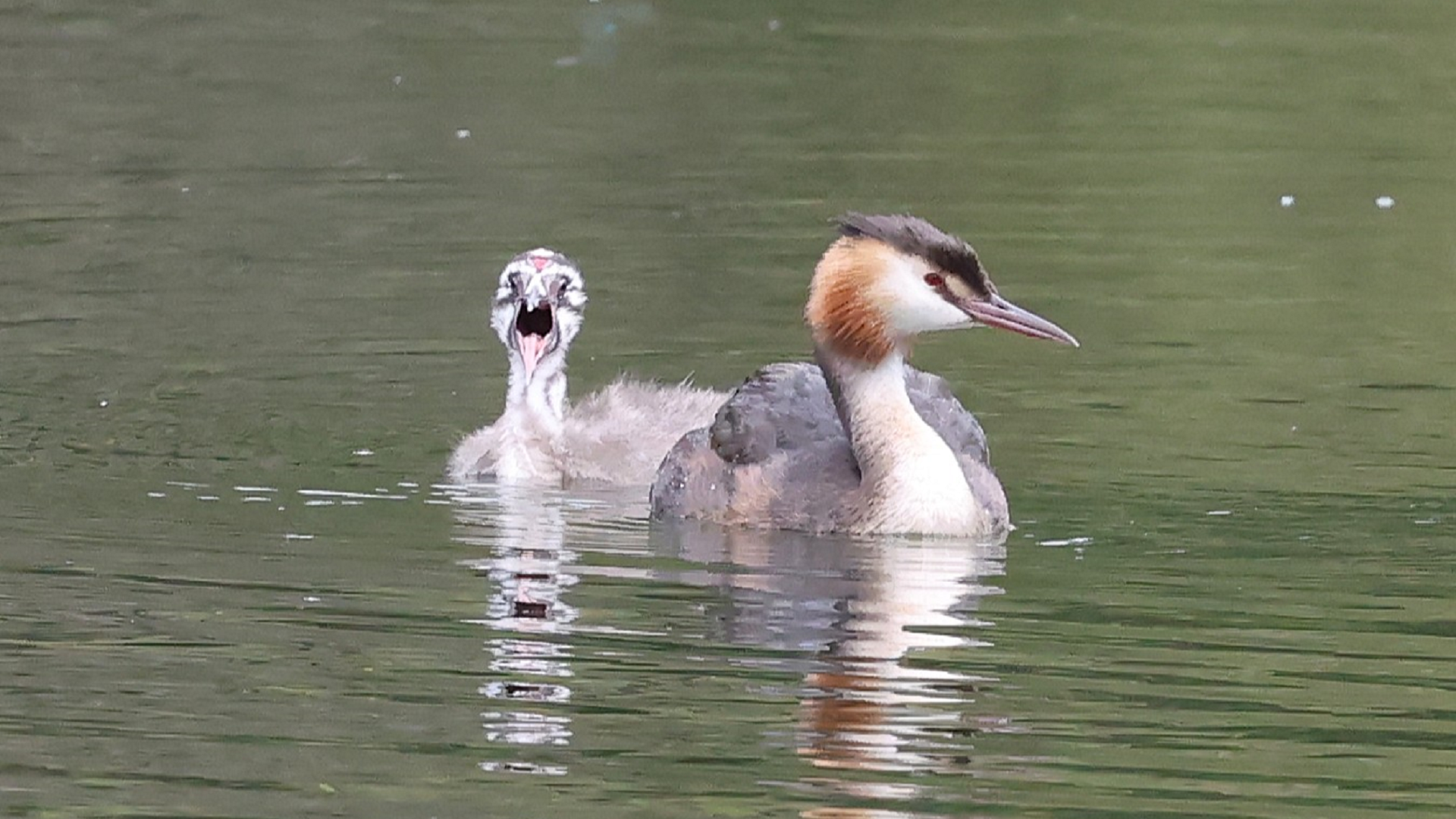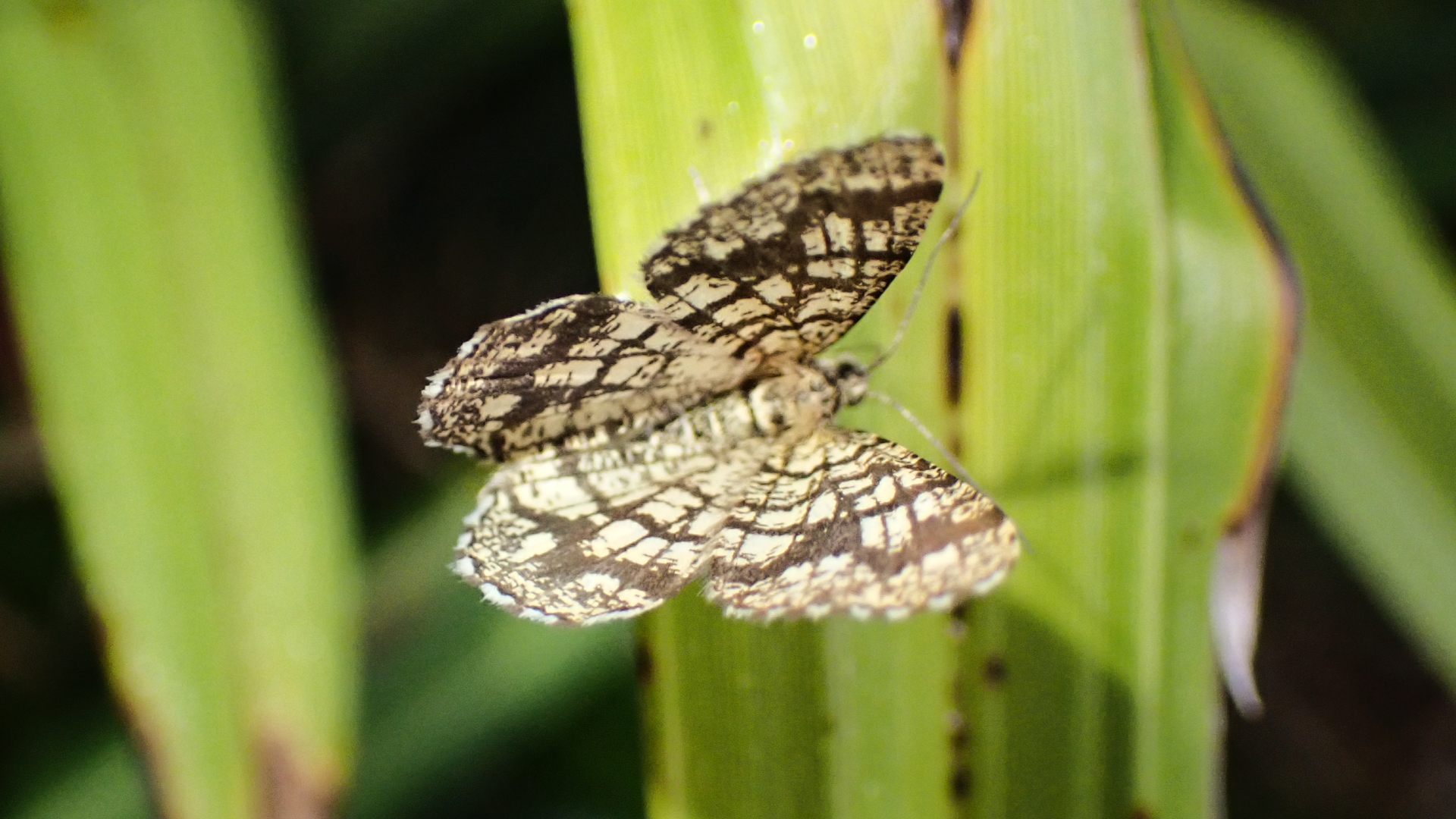AUGUST 2025
Swallow
Hirundo rustica
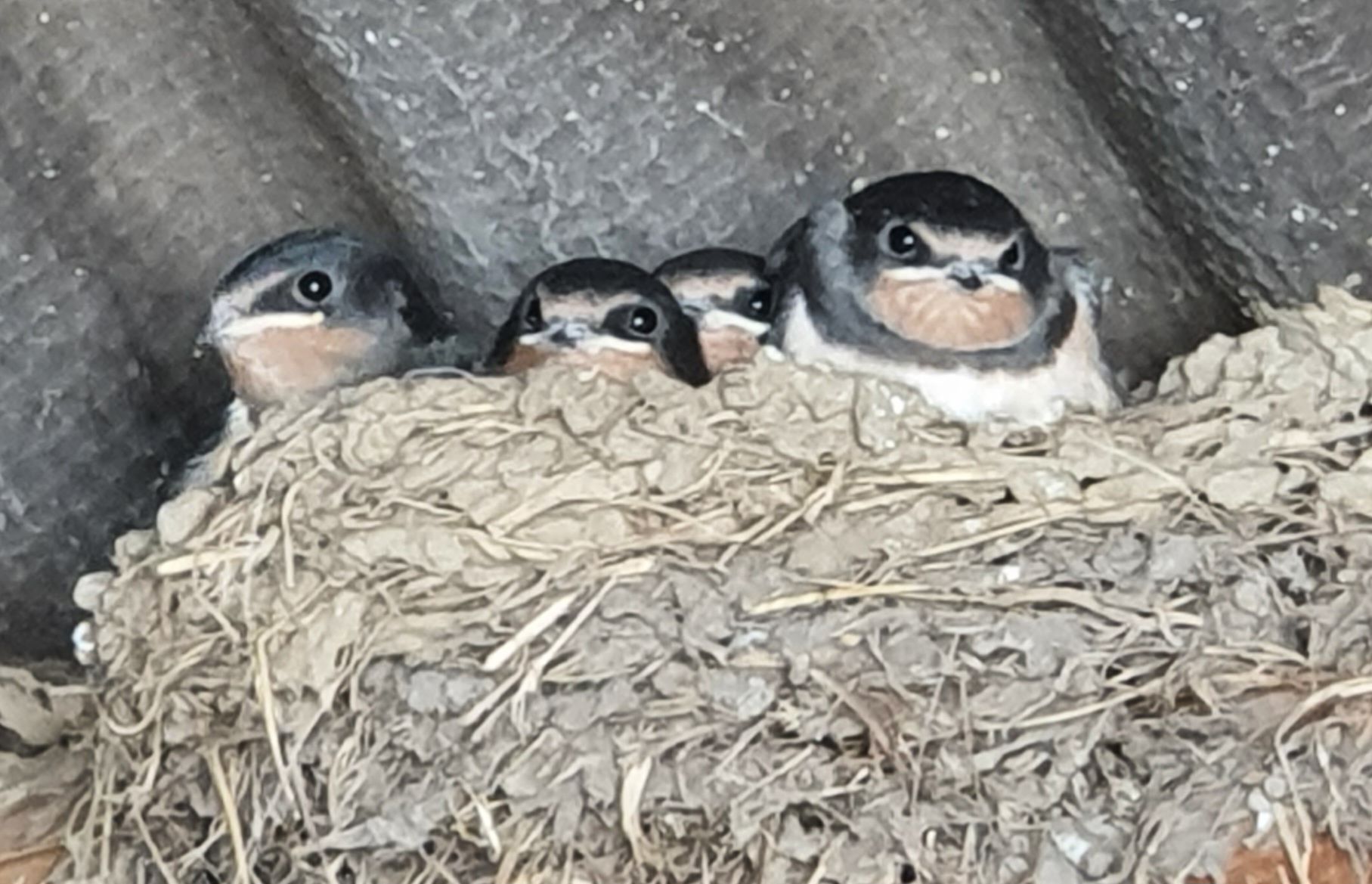
TQ49 05/08/2025 ©Rachel Kail
Swallows are summer visitors. They build nests in sheltered locations. The nests made with a mixture of mud, saliva and straw, can sometimes be found under eaves, in garden sheds, and other outbuildings. Nests are lined with feathers for comfort and warmth.
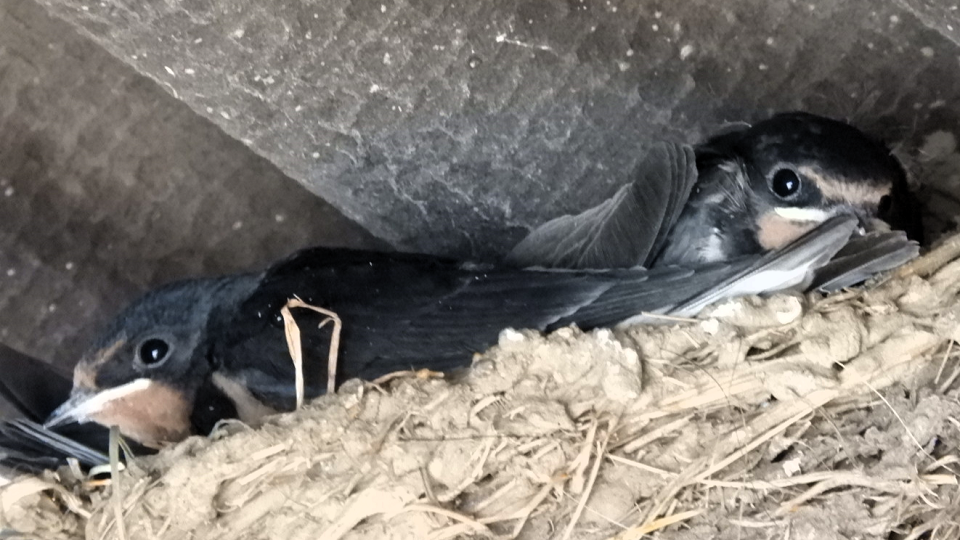
TQ49 04/06/2025 ©Debi H
There is usually 4 or 5 eggs in a clutch. Both parents feed the chicks regurgitated insects. Chicks typically leave the nest roughly 18-23 days after hatching.

TQ4792 10/08/2025 ©Michael Trump
Under the watchful eye of their supportive parents it may take the chicks up to two hours to get airborne once they have left the nest. The parents fly alongside the chicks until they are able to go it alone unsupervised. After fledging, swallows normally return to the nest for a few weeks before leaving for good. These young birds fledged on 6th August and within a few days were venturing further from the nest.
Kestrel
Falco tinnunculus
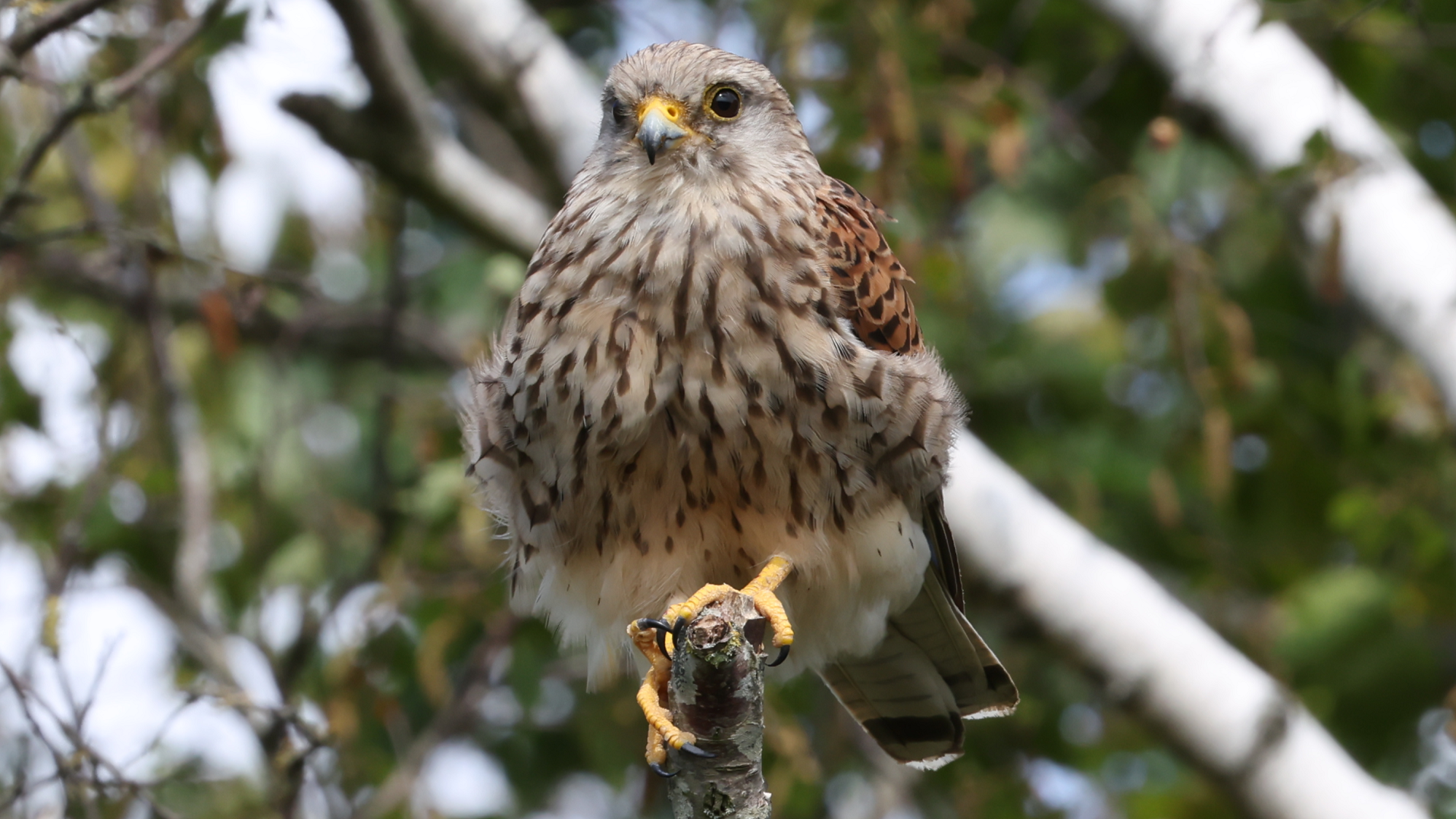
TQ4792 05/08/2025 ©Michael Trump
The Kestrel is a small bird of prey known for its distinctive hovering flight when searching for prey in the meadows. They mainly consume small mammals such as voles and mice, but will also feed on small birds and insects.
Wren
Troglodytes troglodytes
TQ4792 03/08/2025 ©Michael Trump
Wrens spend a lot of time on the ground which gives ticks an opportunity to attach themselves. A bird's head, neck and face are especially vulnerable.
Ixodes brunneus is a specific species known to feed on passerine birds, including wrens. A dust bath, the process of rolling about in loose dirt or dust, helps birds rid their bodies of parasites. Ticks seeking a blood meal can transmit diseases and sometimes cause paralysis, or blindness if located near the bird's eyes.
Nuthatch
Sitta europaea
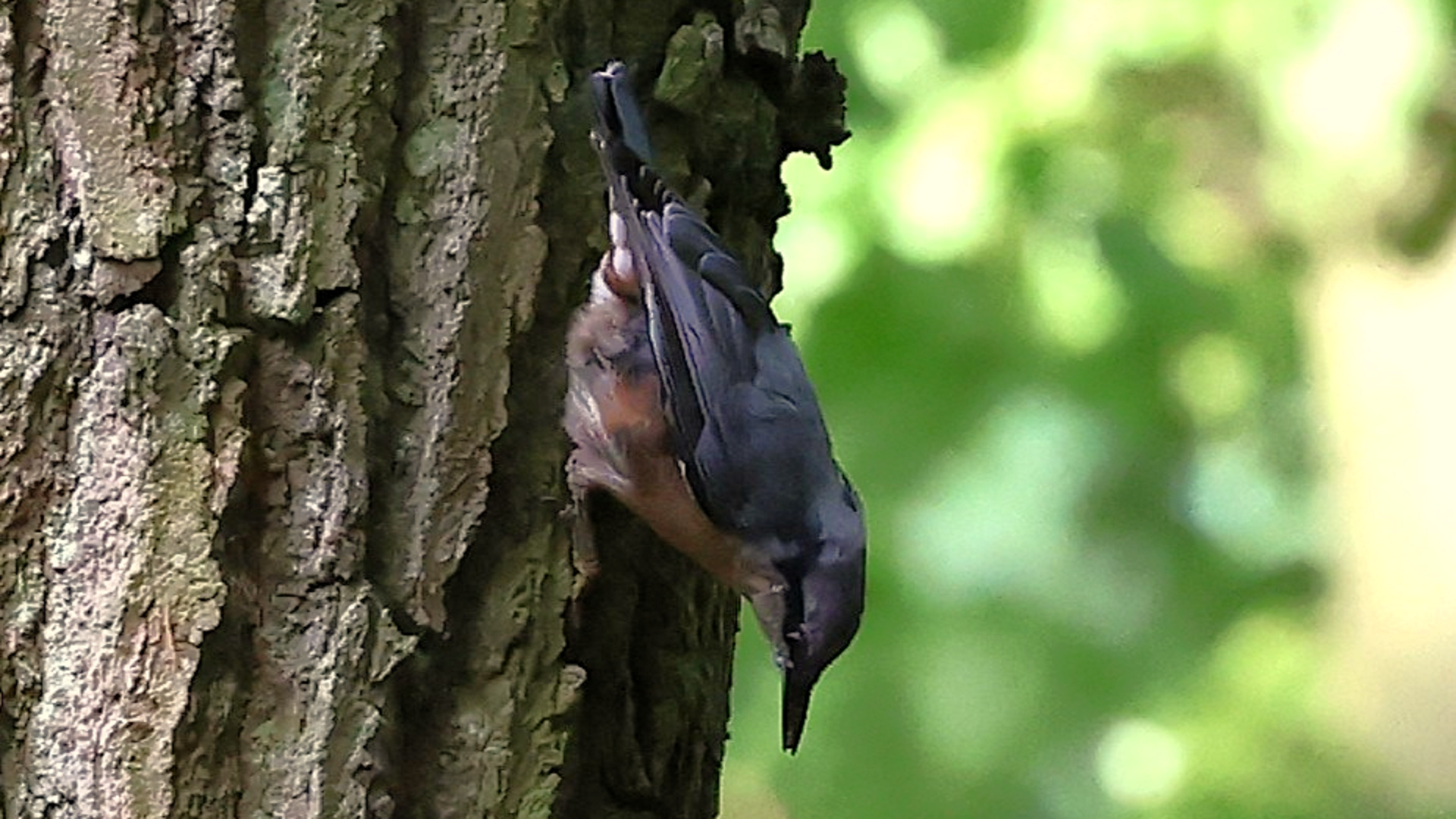
TQ4792 03/08/2025 ©Michael Trump
Nuthatches can walk upside down due to having strong, curved claws and a special toe that allows them to grip bark.
Grey Heron
Ardea cinerea
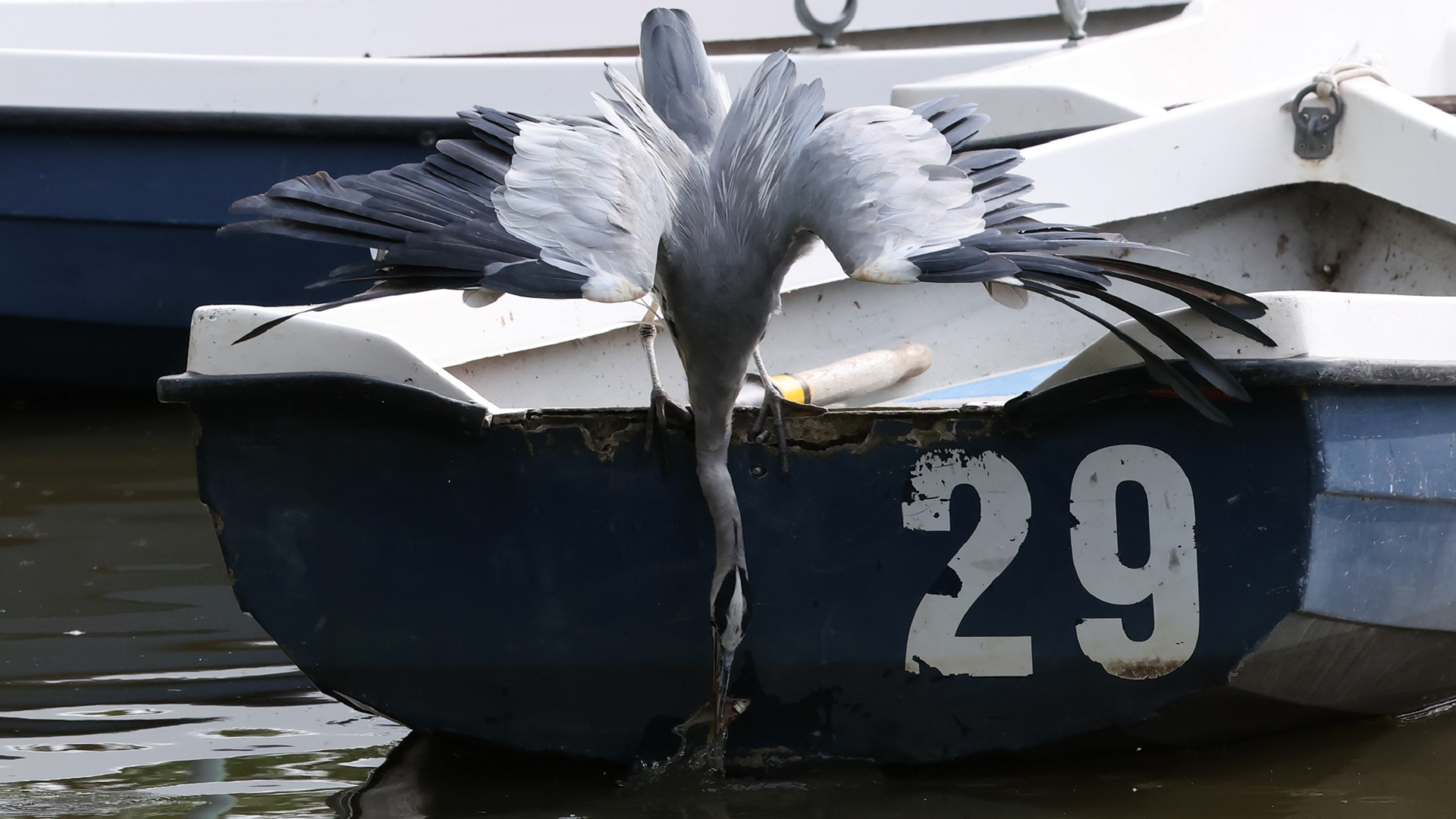
TQ4792 06/08/2025 ©Michael Trump
It is not uncommon to spot a heron standing on the rowing boats. They like to perch near the water waiting for an opportunity to catch fish.
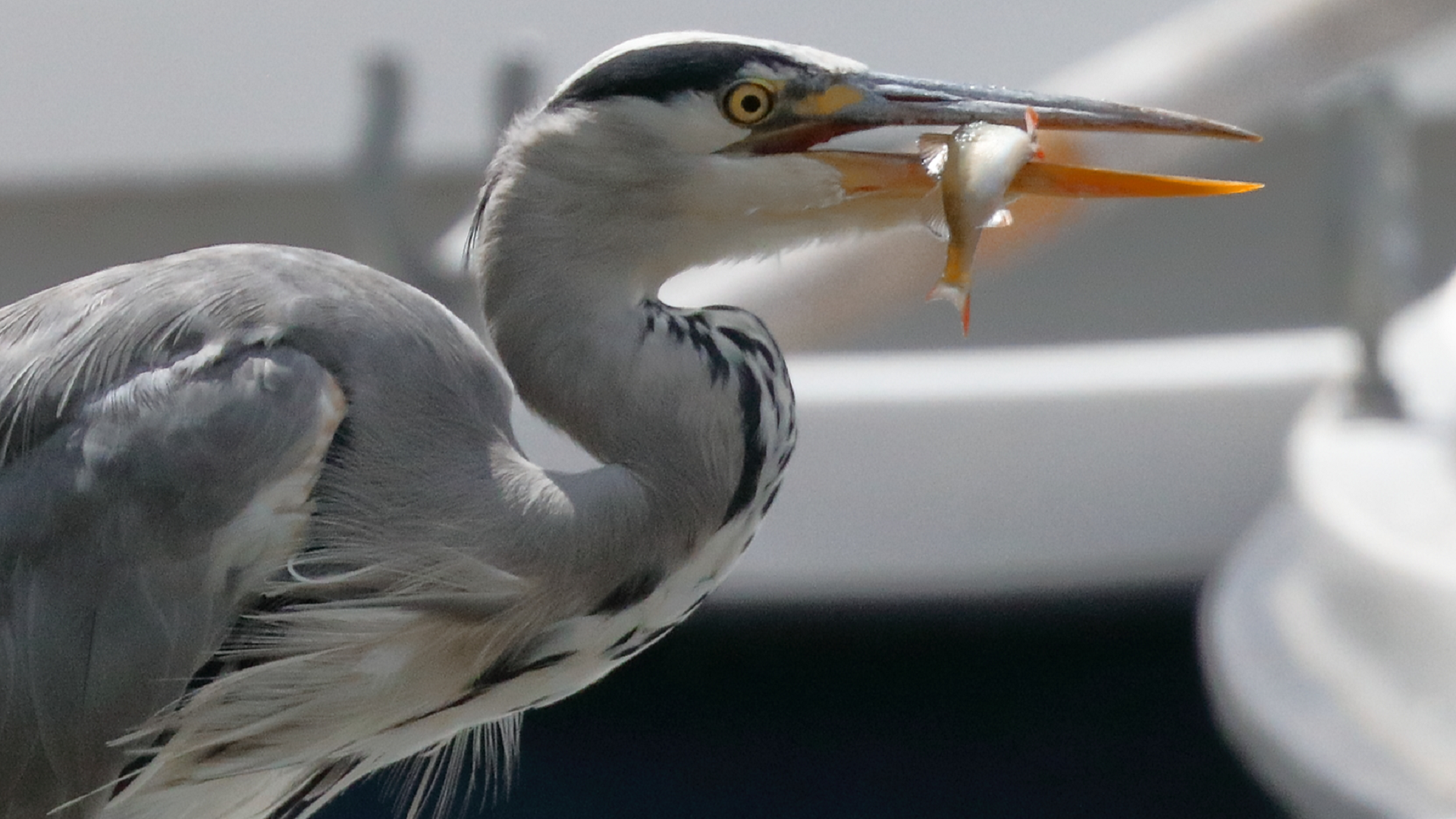
TQ4792 09/08/2025 ©Mike Rumble
When a fish is caught the heron usually tosses it into the air to be swallowed head-first so that the scales and fins don’t catch in the throat.
Great Crested Grebe
Podiceps cristatus
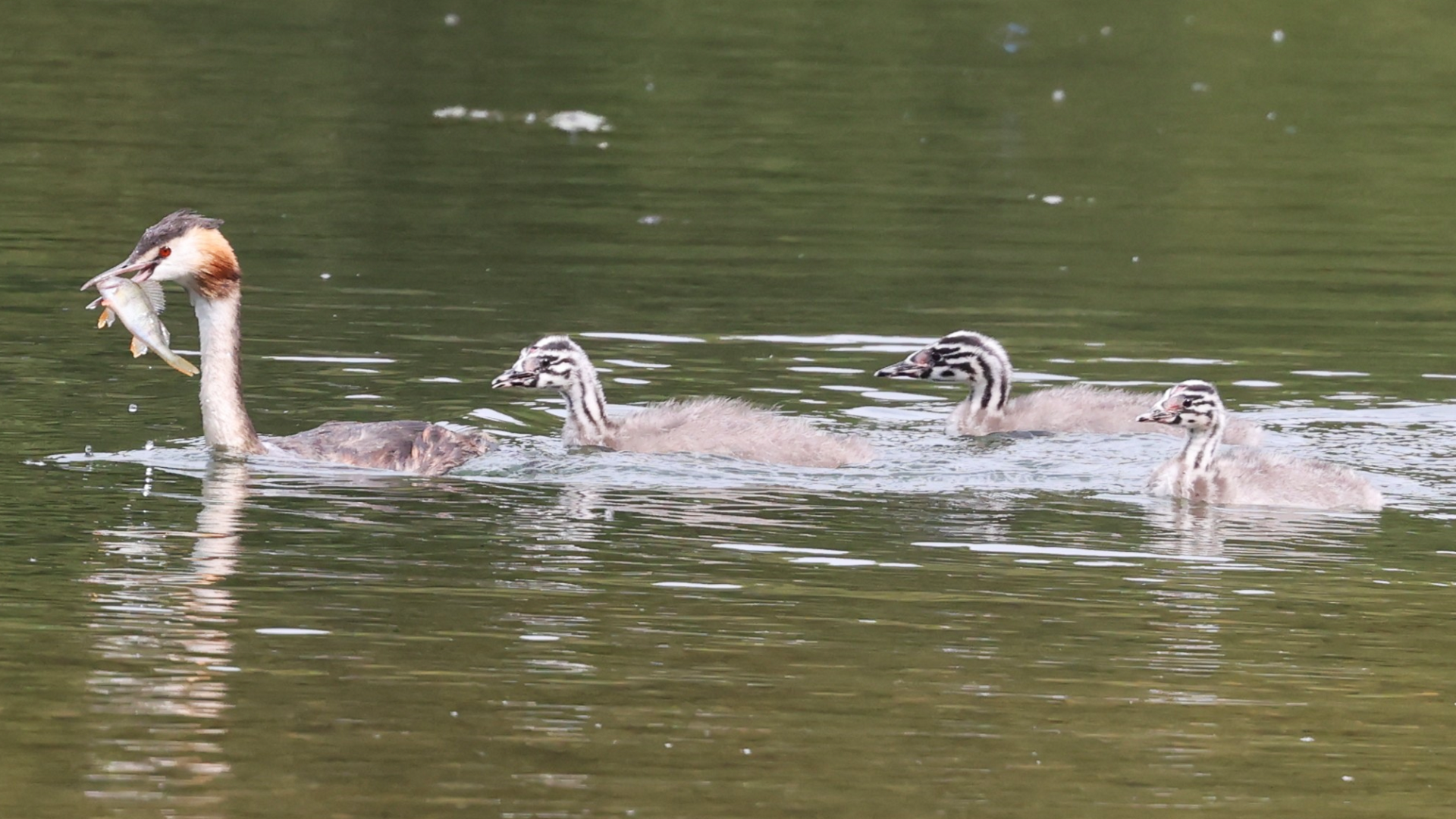
TQ4590 13/08/2025 ©Michael Trump
This Grebe family was photographed at Fairlop Waters. Parents sometimes give their young feathers to swallow when feeding. The reason for this is unclear, but it has been suggested that this is done to assist them in regurgitating fish bones and to make them less susceptible to gastric parasites.
European Hornet
Vespa Crabro

TQ4792 01/08/2025 ©Mike Rumble
European hornets are primarily carnivorous, feeding on a variety of insects, tree sap, fruit, and nectar. They sometimes raid spider's webs for food. Caterpillars are often taken back to the nest for their grubs to feed upon.
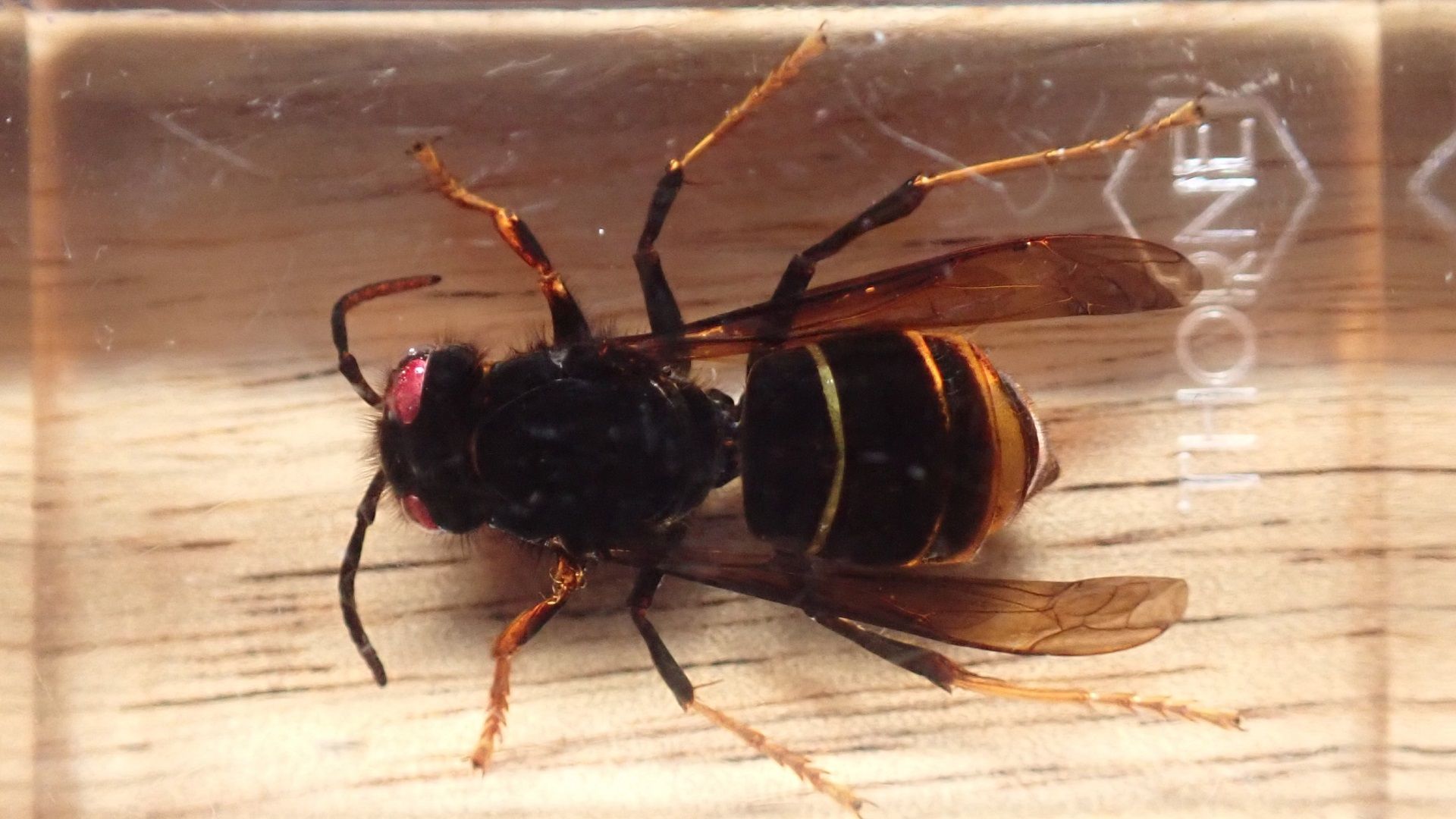
©Raymond Small
This picture shows an Asiatic Hornet otherwise known as the Yellow-legged Hornet. It is smaller and has a far darker body than the European Hornet. The two species can also be told apart by the yellow legs. European Hornets are not a major pest of bee hives. However, the Asiatic Hornet currently spreading across Europe can be a problem for beekeepers. Fortunately, the Asiatic variety hasn't reached Hainault Forest yet (except in resin!).
Willow Emerald Damselfly
Chalcolestes viridis
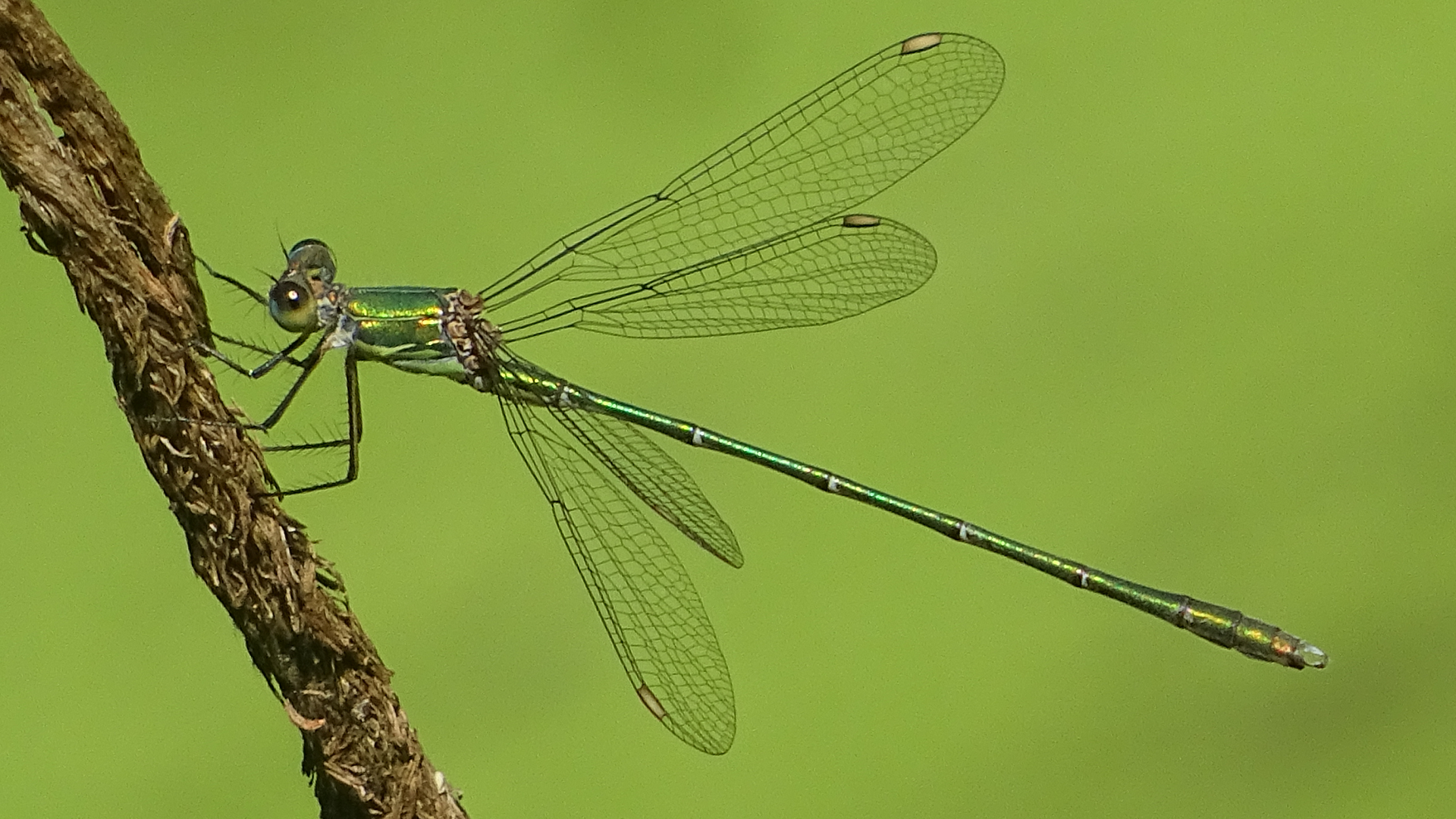
TQ4793 10/08/2025 ©Raymond Small
The Willow Emerald Damselfly is usually seen from July near water where eggs are deposited in willow and alder bark. Large pale wing-spots and a prominent spur on the side of the thorax are distinguishing features that help to identify this species.
Black-tailed Skimmer
Orthetrum cancellatum
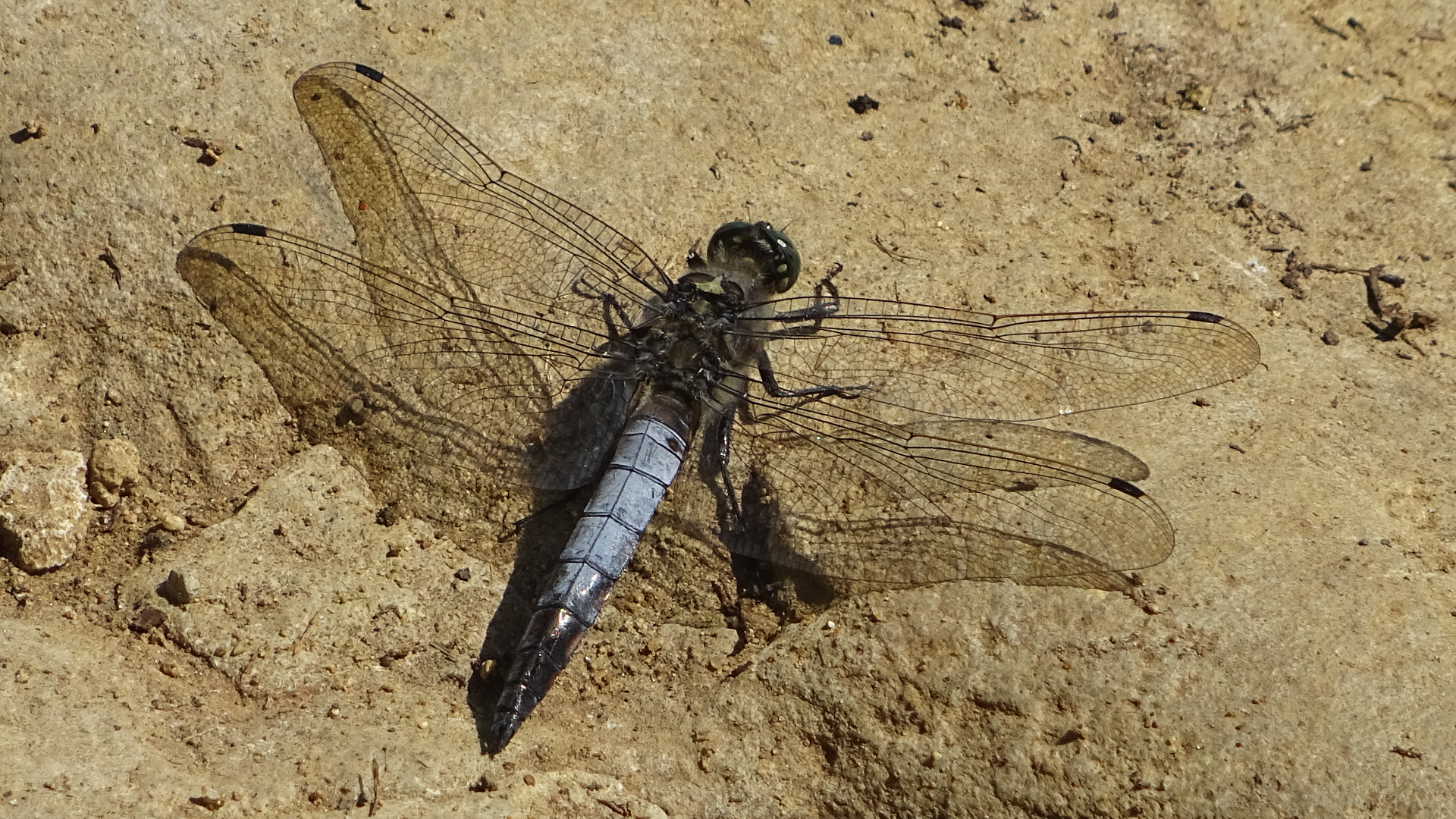
TQ4792 11/08/2025 ©Raymond Small
This species of Dragonfly is on the wing from May to August. Mature males are blue, females and immatures are yellow.
Ruddy Darter
Sympetrum sanguineum
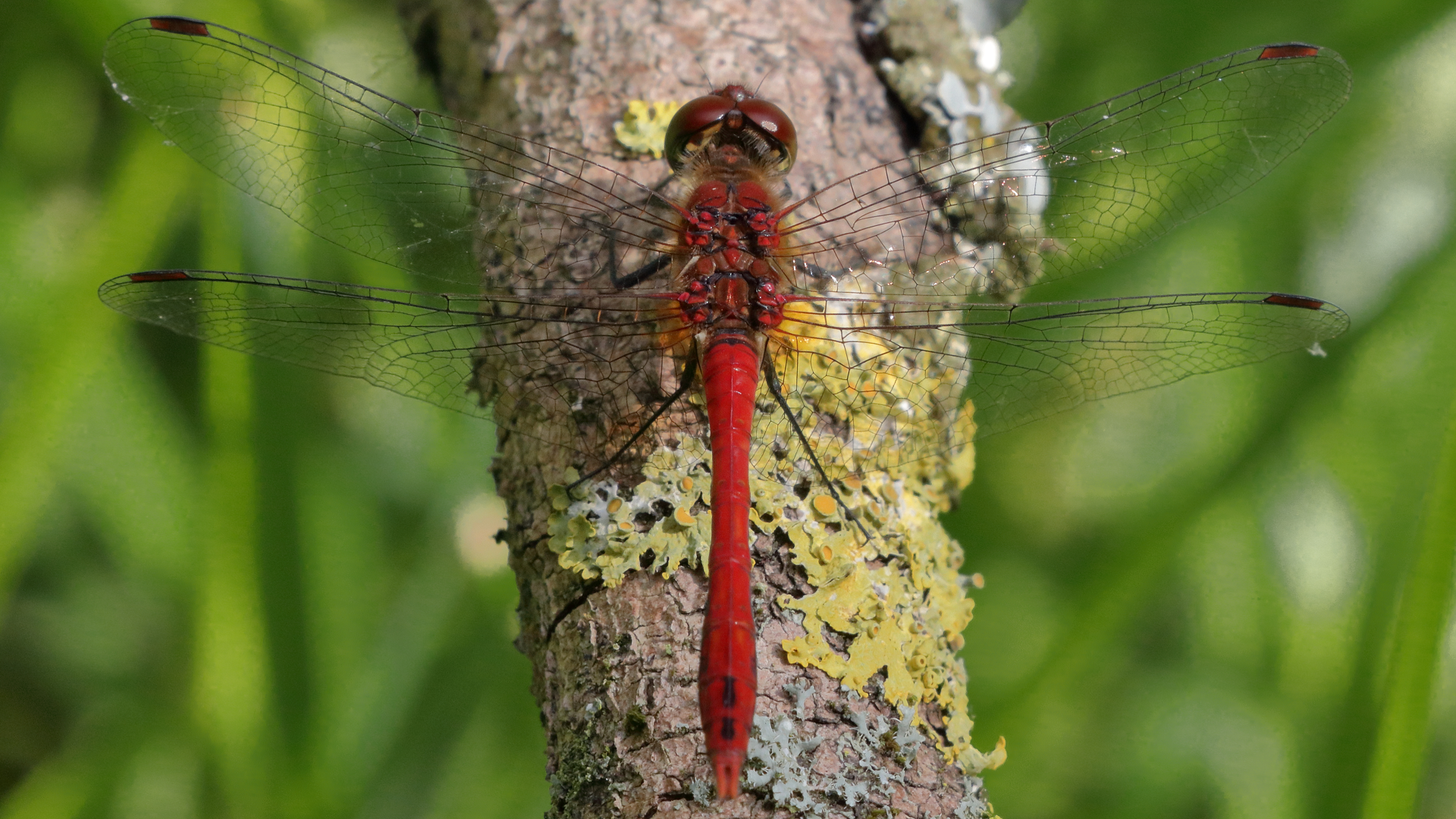
TQ4793 10/08/2025 ©Mike Rumble
The Ruddy Darter is common around well vegetated ponds. Males are red and have club-shaped abdomens. Females have ochre-yellow abdomens with black markings and are not club-shaped. Both sexes have black legs.
Brown Hawker
Aeshna grandis

TQ4792 10/08/2025 ©Mike Rumble
The Brown Hawker lays its eggs in floating vegetation and timber in ponds or slow-flowing waters. It has a brown body with yellow stripes on the side of the thorax and brown tinged wings. The brown wings make this species distinct. It can be found hunting along woodland rides some distance from water.
Mother of Pearl
Patania ruralis
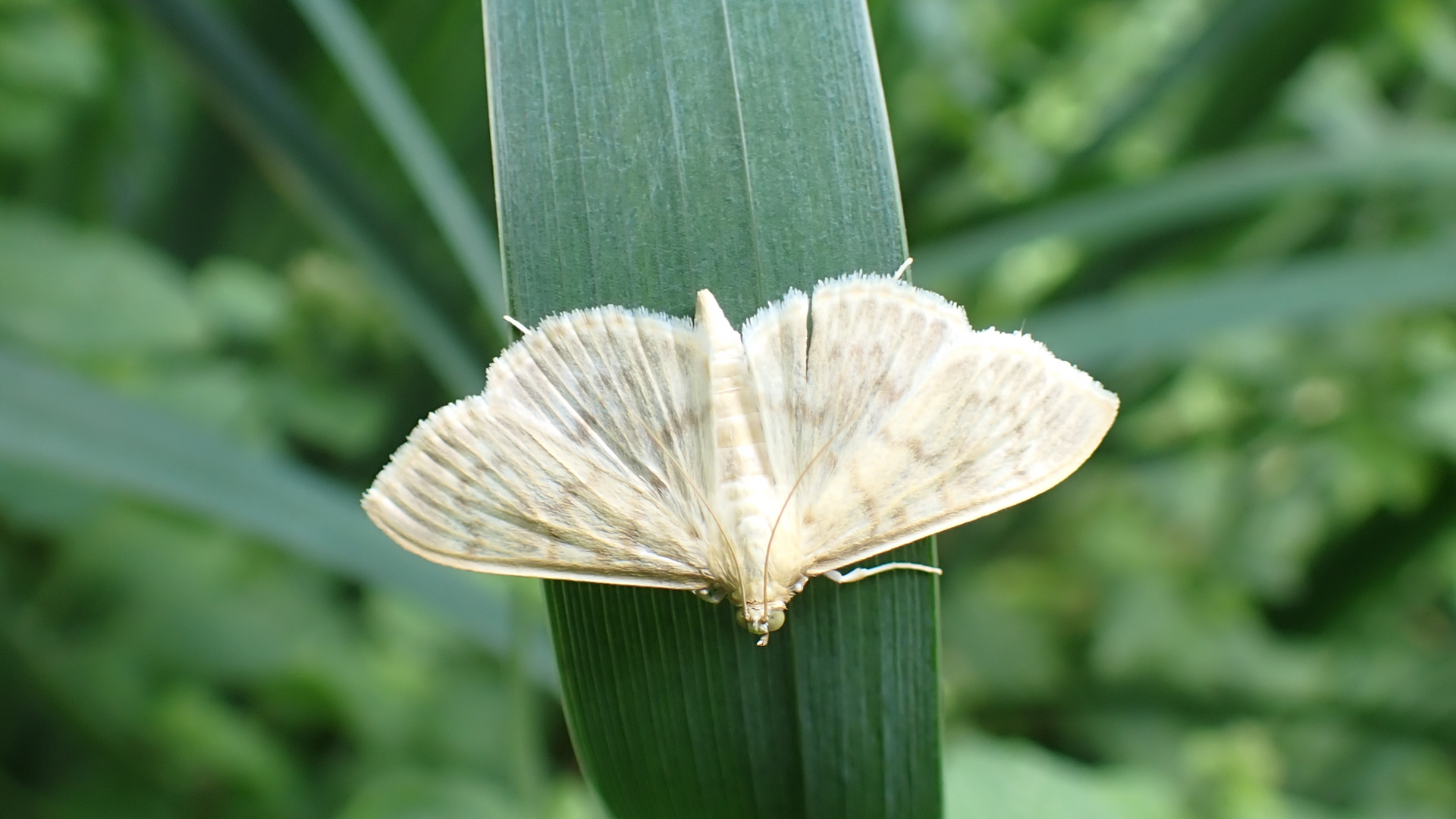
TQ4793 10/08/2025 ©Raymond Small
The Mother of Pearl is a micro-moth, but with a wingspan up to 4cm it is larger than many macro-moths! It is easily disturbed in stinging nettle patches during August. It likes to rest on the underside of leaves. The wings are iridescent like mother of pearl when viewed from different angles, hence its common name. Its larvae mainly feed on stinging nettles, living in folded leaves spun together.
Leafhopper
Eurhadina
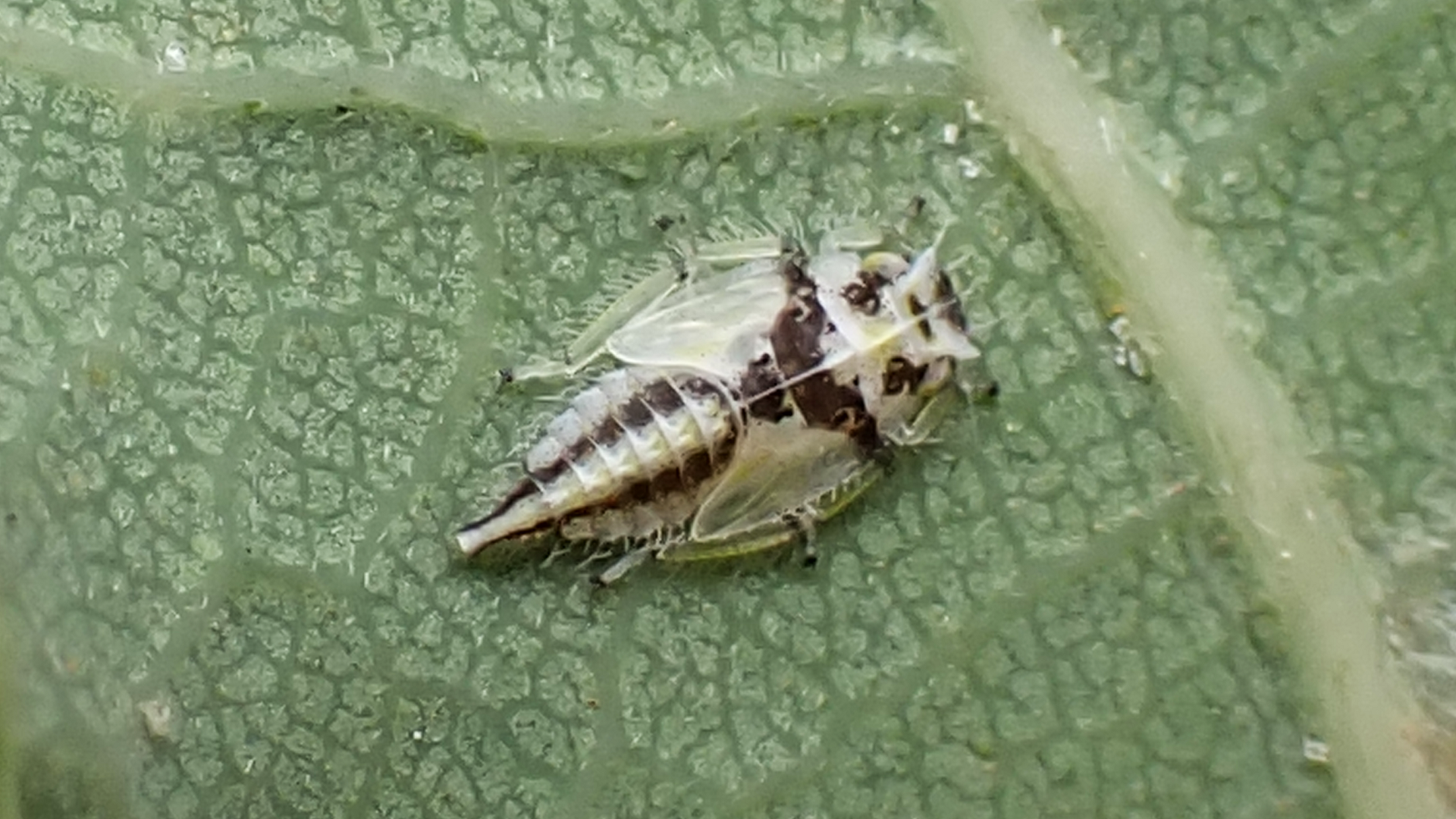
TQ4792 03/08/2025 ©Raymond Small
Leafhoppers in the genus Eurhadina normally have a flattened appearance, particularly at the nymph stage. This nymph discovered on an oak leaf measured about 2mm long.
Common Fleabane
Pulicaria dysenterica
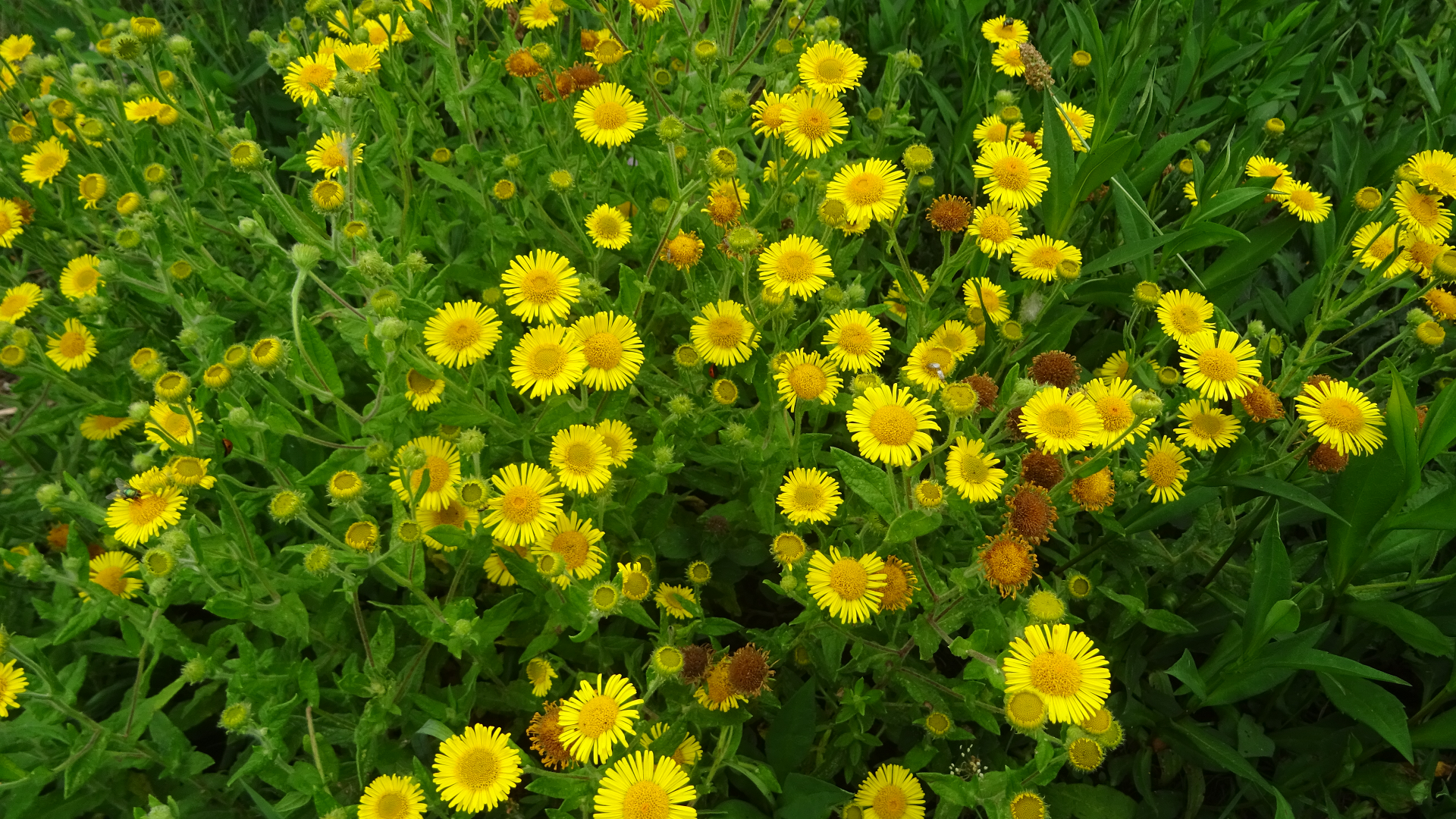
TQ4792 13/08/2025 ©Raymond Small
Common Fleabane is a perennial found in damp habitats during August. Its golden-yellow composite flower-heads (15-30mm across) grow on erect stems. The basal leaves often wither before the flowers appear.
Water Mint
Mentha aquatica
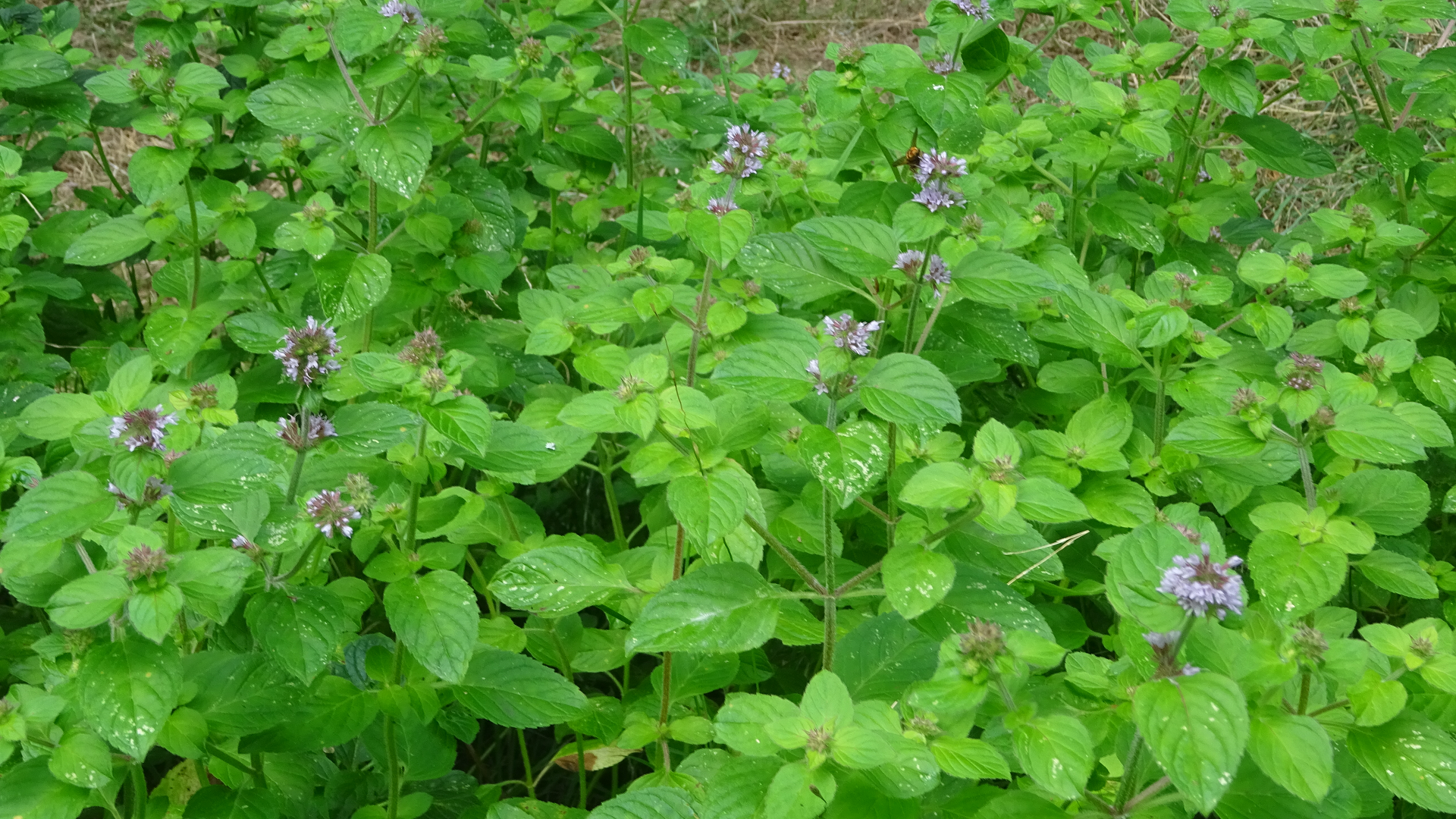
TQ4792 10/08/2025 ©Raymond Small
Water Mint grows in freshwater habitats and during August can often be found near Hainault Lake, Roes Well and Sheepwater. It has clusters of lilac-pink flowers and aromatic, dark green leaves.
Mugwort
Artemisia vulgaris
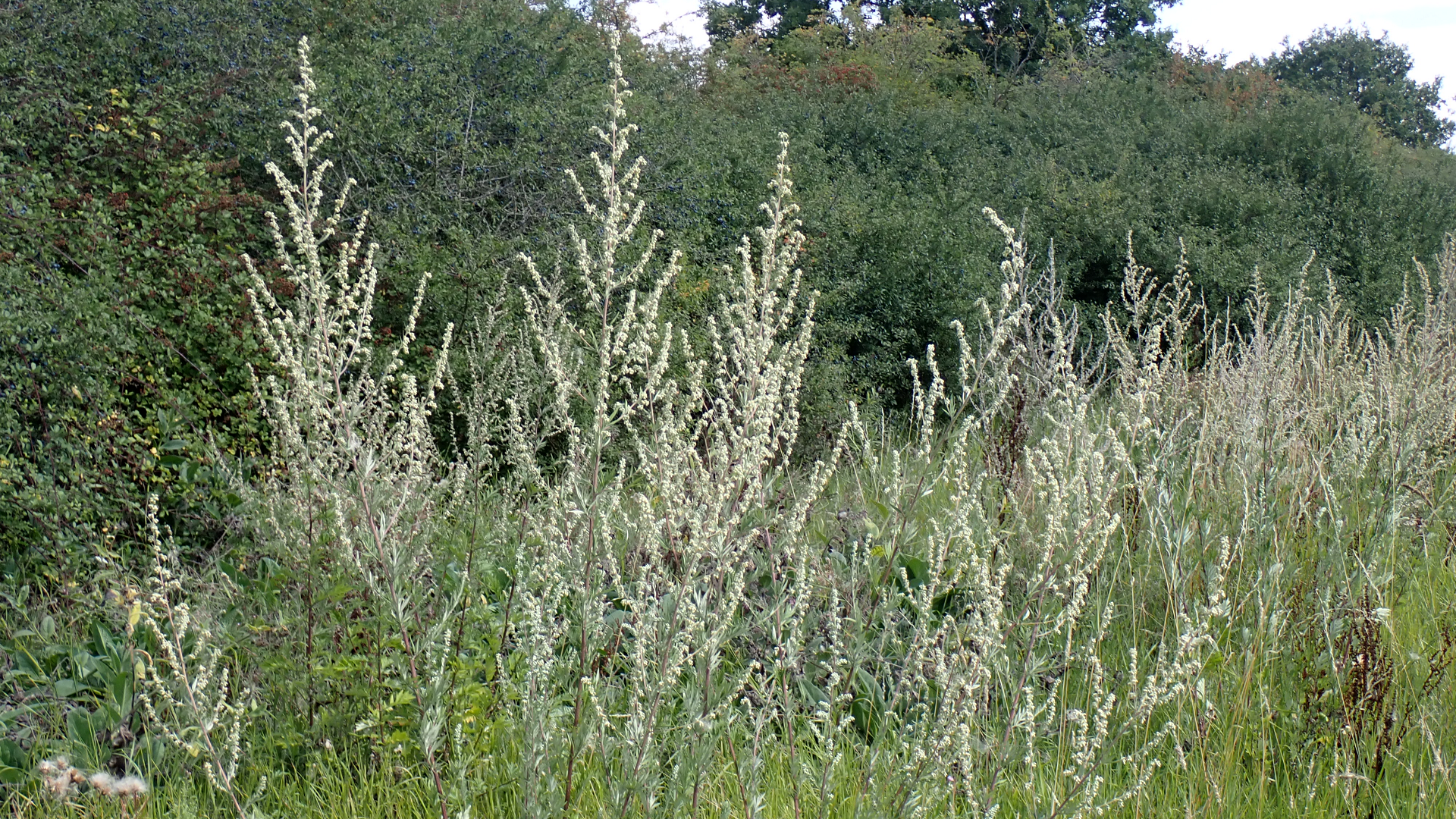
TQ4792 10/08/2025 ©Raymond Small
Mugwort is a perennial often found on disturbed ground from May until September. It has erect reddish-brown stems that grow up to 1.5m tall. The tiny flowers, 3-4mm long, are wind pollinated.

TQ4792 11/08/2025 ©Raymond Small
Meanwhile... on a balcony in Hastings!
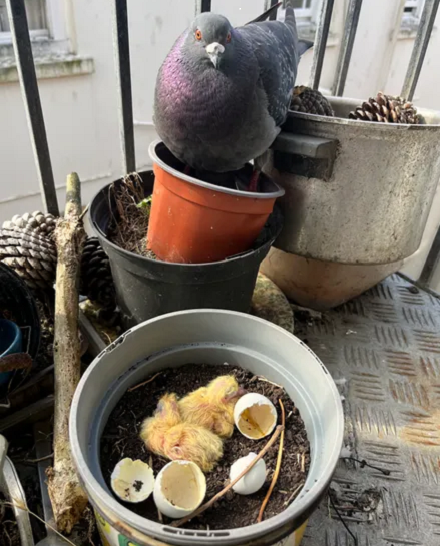
©Janet Rogers
Janet thought these pictures might be of interest and emailed them to the website. This picture shows two recently hatched pigeons. Pigeon chicks are called "Squabs".

©Janet Rogers
Initially Squabs rely on "crop milk", a milky substance produced by both parents. The parents regurgitate crop milk into the chicks' mouths.
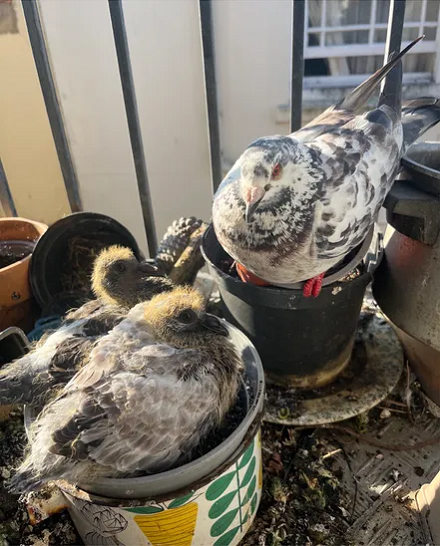
©Janet Rogers
The parents gradually introduce the chicks to partially digested seeds and other foods. The chicks eventually shift to a diet of seeds, legumes, and other foods.
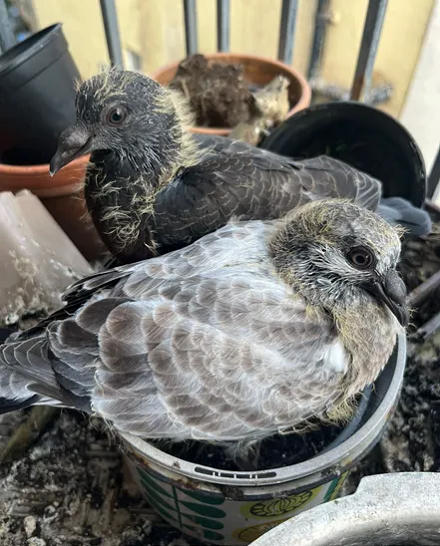
©Janet Rogers
Pigeons typically leave the nest for the first time around 4 to 5 weeks after hatching. They may still be fed by their parents for a while after leaving the nest.
Thank you to everyone that has contributed this month.
© hainaultforest.net. All rights reserved.
This website uses necessary cookies. It does not use any targeting or advertising cookies.



